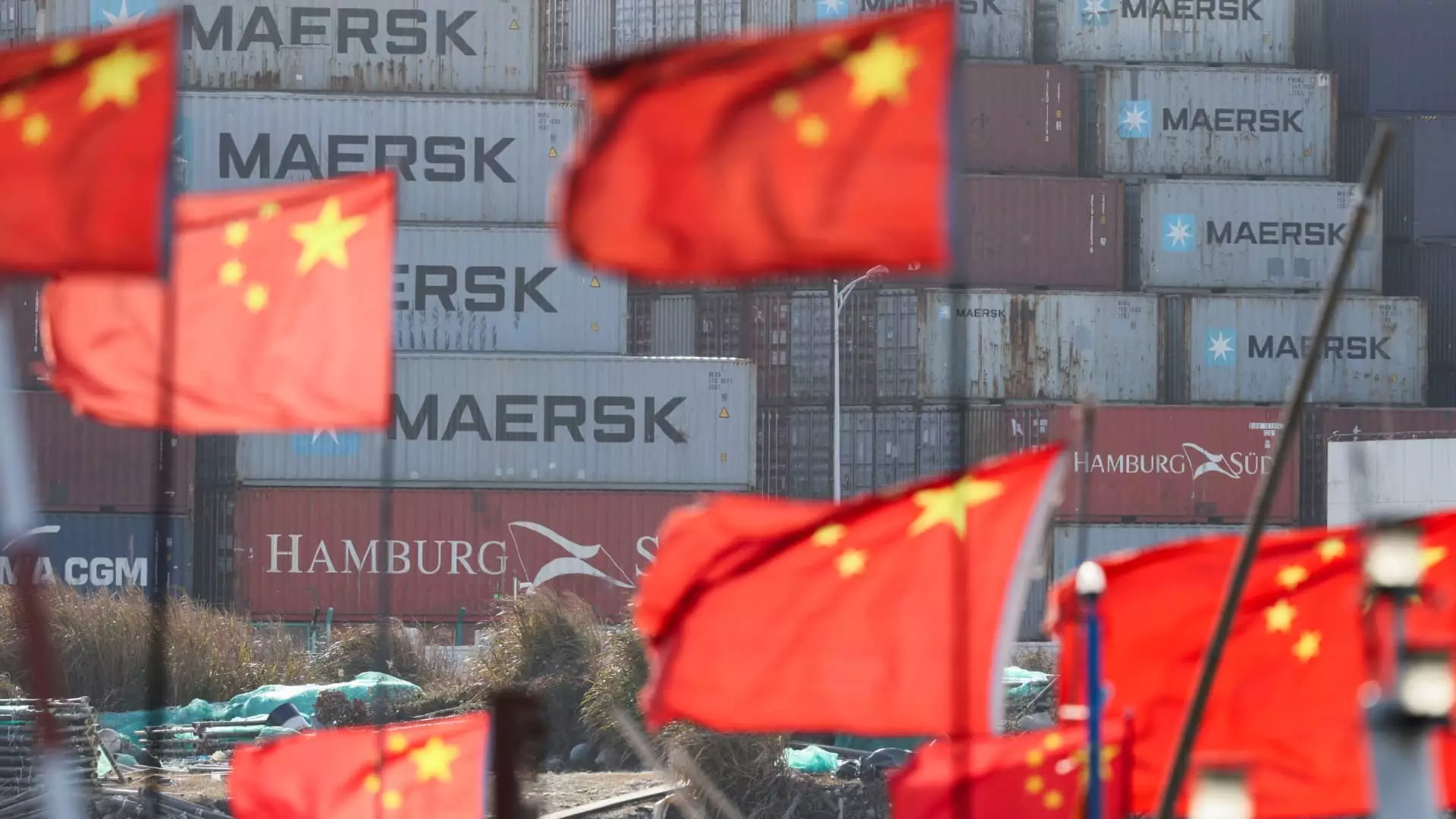The landscape of global trade is marred by heightened tensions, particularly as a result of the United States’ increasingly aggressive tariffs aimed at China, among other nations. Recently, a staggering 34% tariff was announced by the Trump administration, pushing the burden of U.S.-China trade relations to a breaking point. Beijing has rapidly shifted into a defensive posture, calling for the immediate cancellation of these tariffs while simultaneously pledging vague countermeasures. The current geopolitical climate raises critical questions about the sustainability of these trade practices and whether the U.S. is prepared for the economic fallout that follows such punitive measures.
China, the world’s second-largest economy, was already grappling with a heavy 20% tariff increase implemented earlier this year, resulting in a cumulative 54% duty on Chinese exports to the U.S. This situation raises alarms, as the economic implications are dire not just for China, but also for trading partners like the European Union and Southeast Asian nations. The stakes have never been higher, and experts like Bruce Pang from CUHK Business School forewarn that the real danger lies in America’s inability to foresee the repercussions of such antagonistic policies.
China’s Strategic Shift Towards Domestic Economy
Rather than initiating a tit-for-tat response characterized by retaliatory tariffs, intelligence from analysts suggests that China’s strategy will be multi-faceted and inward-looking. In the wake of these tariff announcements, Chinese leaders are increasingly focusing on stimulating domestic consumption and exploring diverse export routes. The nation is at a crossroads, and the urgency to stabilize its economy only intensifies as pressures mount from both domestic and international arenas.
It’s noteworthy that since the global pandemic spurred a significant uptick in exports in 2021, Chinese policymakers are now bracing for a possible slowdown. They understand that heavy reliance on U.S. markets poses a risk, and thus the pivot to boosting domestic consumption becomes crucial. President Xi Jinping’s recent outreach to tech entrepreneurs like Alibaba’s Jack Ma underscores a shift back towards nurturing the private sector after years of regulatory crackdowns. This move indicates a calculated recognition within the Communist Party that fostering domestic entrepreneurship will be essential in countering external pressures.
Resilience Through Diversification
Further complicating the narrative is the interplay of geopolitical alliances and manufactured trade routes. Analysts point out that with many other countries facing similar tariffs, the perception that China will lose its competitive edge in the global marketplace appears misguided. Cameron Johnson, a Shanghai-based consultant, indicates that Chinese manufacturers have diversified their operations and are now better positioned to absorb shocks from the U.S. tariffs. Businesses in export hubs like Yiwu exhibit a blend of indifference and resilience, suggesting that many expect to weather the storm.
This diversification does not just serve as a buffer against U.S. tariffs; it facilitates China’s narrative of resilience. By building stronger ties with Southeast Asian nations through trade agreements like the Regional Comprehensive Economic Partnership (RCEP), China is effectively fortifying its economic standing while reducing dependence on any single market, including the United States. The ripple effect of these trade ties will likely culminate in a realignment of global power dynamics favoring Beijing.
The Implications of a Strong Yuan
An interesting dimension of China’s financial strategy revolves around maintaining the strength of the yuan against the U.S. dollar. With inflationary pressures mounting globally, this approach could serve as a tactical maneuver designed to usurp economic stability from the U.S. By keeping the currency robust, Chinese policymakers can create an environment where external inflation influences the economic trajectory of their adversaries rather than their own.
Moreover, keeping the yuan strong essentially sends a message: China is not merely surviving; it is actively seeking to reshape the global economic landscape. This psychological tactic may also extend to American retailers who are increasingly caught between rising costs and declining purchasing power in the face of tariffs.
The Illusion of American Fortitude
While the U.S. believes it is imposing its will on the international stage through tariffs, there are indications that this strategy may backfire spectacularly. The broader implications for the U.S. economy cannot be ignored. Goldman Sachs suggests that heavy tariffs could lead to a contraction in GDP by as much as two percentage points, revealing a troubling contradiction in American policymaking.
By targeting a single nation while inadvertently impacting a constellation of other trading partners, the U.S. is effectively isolating itself. Countries like Vietnam and Thailand that previously acted as alternative suppliers are now increasingly aligning themselves with China, further galvanizing the Dragon’s position. This ongoing trade war not only puts pressure on U.S. firms but also raises concerns about the United States’ overall competitiveness.
In this context, it becomes increasingly evident that the U.S. may be wrestling with an illusion of strength while risking long-term economic disruption. The dialogue around tariffs and trade is evolving, and China’s calculated response stands as a testament to its resilience and adaptability in the face of external threats. The fundamental question remains: Is America ready to contend with a China that is more strategically oriented than ever, while its own economic principles are left to unravel?


Leave a Reply